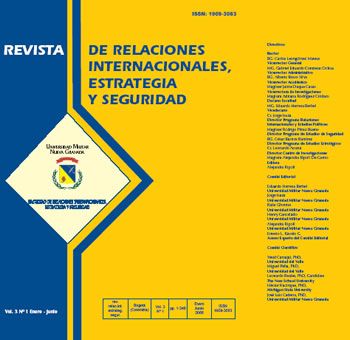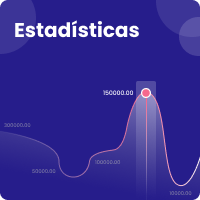Ethos y praxis de la revolución cuantitativa en geografía
Resumen
El artículo presenta una revisión a la llamada revolución cuantitativa en las décadas de los años 50 y 60 del siglo XX, principalmente en los escenarios científi co-académicos de las universidades americanas e inglesas. Se destacan los posibles fundamentos fi losófi cos de dicho paradigma y se examina el debate entre Fred K. Schaefer y Richard Hartshorne acerca del “excepcionalismo geográfi co” y su trascendencia en la geografía contemporánea. Por último se destaca la infl uencia del paradigma en la geografía económica locacional.
Descargas
Lenguajes:
esAgencias de apoyo:
UMNGReferencias bibliográficas
ABLER, Ronald; ADAMS, John S.; GOULD, Peter. 1971. Spatial organization: The geogr-apher's view of the world. Englewood Cliffs, N.]., Prentice-Hall.
AMBROSE, Peter, ed. 1969. Analytical human geography. New York, American Elsevier Company, Inc.
BARNES, Trevor J. 2001. Retheorizing economic geography: From the quantitative revolution to the "cultural turn". Annals of the Association of American Geographers, 91 (3): 546-565.
BARNES, Trevor J. 2004. Placing ideas: geniusloci, heterotopia and geography's quantitative revolution. Progress in Human Geography, 28 (5): 565-595.
BERRY, Brian J.L. 1971. Problems of data organization and analytical methods in geography. ¡ournal of the American Statistical Associatíon, 66 (335): 510-523.
BURTON, lan. 1963. The quantitative revolution and theoretical geography. The Canadian Geographer, 7: 151-162.
CAPEl, Horacio. 1981. Filosofía y ciencia en la geografía contemporánea. Barcelona, Barcanova.
CAPEl, Horacio. 1983. Positivismo y antipositivismo en la ciencia geográfica. El ejemplo de la geomorfología. Cuadernos críticos de geografía humana - Geocrítica, 8 (43). Online, acceso: febrero 5, 2008: http://www.ub.es/geocritlgeo43.htm
CHOjNICKl, Zbyszko. 1970. Prediction in economic geography. Economic Geography, 46: 213-222.
CHORlEY, Richard J. 1964. Geography and analogue theory. Annals of the Association of American Geographers, S4 (1),127-137.
CHORlEY, Richard J.; Hagget, Peter, eds. 1967. Models in geography. london, Methuen & Ca., Ltda.
CLAVAL, Paul, ed. 1998. Introduction to regional geography. Cambridge, Mass., Blackwell.
DELGADO, Ovidio. 2003. Debates sobre el espacio en la geografía contemporánea. Bogotá. Universidad Nacional: Unibiblos.
GREGORY, S. 1976. On geographical myths and statistical fables. Transactions nf the Institute of British Geographers, New Series, 1 (4): 385-400.
GREGORY, Samuel. 1983. Quantitative geography: The British experience and the role of the Institute. Transactions of the Institute of British Geographers, New Series, 8 (1): 80-89.
HARTSHORNE, Richard. 1955. "Exceptionalism in geography" reexamined. Annals of the Association of American Geographers, 43 (3): 205-244.
HARTSHORNE, Richard. 2001. "Excepcionalismo en geografía" re-examinado (trad. de H. F. Rucinque). Semestre Geográfico [Bogotál, 1 (2): 168-210.
HARTSHORNE, Richard.1939. The nature of geography: A critical survey of current thought in the light of the past. Annals of the Associatinn of American Geographers, 29 (3-4): 73-658.
HARTSHORN E, Richard.1959. Perspective on The Nature of Geography. Chicago, Rand McNally para The Association of American Geographers.
HARVEY, David. 1969. Explanation in geography. London, Edward Arnold.
KEYLOCK, Christopher and Dorling, Danny. 2004. What kind of quantitative methods for what kind of geography? Area, 36 (4): 358-366.
KUHN, Thomas S. 1962. The structure of scientific revolutions. Chicago, The University of Chicago Press.
LAVALLE, Plácido; McCONNELL, Harold¡ BROWN, Robert G .. 1967. Certain aspects of the expansion of quantitative methodology in American geography. Annals of the Association of American Geographers, 57 (2): 423-436.
MOULlNES, Carlos-Ulises.1979. La génesis del positivismo en su contexto científico. Cuadernos críticos de geografía humana - Geocrítica, 4 (19). Online, acceso: febrero 26,2008: http://www.ub.es/ geocritlgeo19.htm
PATTISON, William D. 1964. The four traditions of geography. The Journal of Geography, 63: 211-216.
PEET, Richard. 1998. Modern geographic thought. Cambridge, Mass., Blackwell Publishers.
SCHAEFER, Fred K. 1953. Exceptionalism in geography: A methodological examination. Annals of the Association of American Geographers, 43 (3) : 226-249.
SCHAEFER, Fred K. 2001. Excepcionalismo en geografía: Un análisis metodológico. Semestre Geogrofico [Bogotá], 1 (1): 76-98. ITraducción del texto inglés de 1953 por Horacio Capel, originalmente publicado en España, Universidad de Barcelona, en 1971, 1974 Y 1980].
TAAFFE, Edward J. 1974. The spatial view in context. Annals of the Association of American Geographers, 64 (1), 1-16.
Taylor, Peter; Goddard, John. 1974. Geography and statistics: An introduction. The Statistícian, 23 (3/4), Statistics and Geography: 149 -155. Online, acceso: abril 28, 2008): http://www.jstor.orglst,able/ 2987578
TAYLOR, Peter. 1976. An interpretation of the quantification debate in British geography. Transactions of the Institute of British Geographers, New Series, 1 (2): 129-142.
WILSON, Alan G. 1972. Theoretical geography: Sorne speculations. Transactíons of the Institute of British Geographers, 57: 31-44.
| Estadísticas de artículo | |
|---|---|
| Vistas de resúmenes | |
| Vistas de PDF | |
| Descargas de PDF | |
| Vistas de HTML | |
| Otras vistas | |












